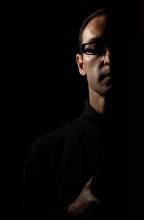What Is It
Is the red you see indeed the very same red that anyone else does? What is the redness of red even like? These sorts of questions are not just amusing, if worn-out, popular philosophical ponderings. Thinkers in the philosophy of perception take such questions as serious windows into the nature of the world and of the mind. Although we are constantly surrounded by colors, the experience of perceiving them – what it is like to see red, for example - remains a mysterious phenomenon. Where are colors: in objects, or in our minds? Could color experiences ever be explainable in terms of raw physical facts? Or is there something about color that goes beyond what science can teach us? John and Ken go full spectrum with Jonathan Cohen from UC San Diego, author of The Red and the Real: An Essay on Color Ontology.
Listening Notes
Are colors splattered all over the world, or do they exist in our heads? Ken claims that color is clearly in the eyes of the beholder, because different observers in different circumstances can see different colors given the very same input. John counters that just because perceived color is relative, this doesn’t imply that actual colors aren’t objectively real. Color certainly seems splattered over the world, so why don’t we take this appearance at face value?
Our guest Jonathan is invited to chip in. He takes an interesting middle ground view where color is located neither in the object nor in the subject, but in the relation between the two. These relations are objective parts of the world, but they are also intimately dependent on a perceiver. Jonathan goes on to hammer home one clear problem with John’s view; there is no non-arbitrary way to decide who’s right about the objective color if there are variations between observers. If one observer looks at a light and sees green, whereas another sees a green-blue, who’s to say which observer is “right?”
An audience member wonders about how objective properties of light like wavelength and frequency relate to the debate. Jonathan points out that the existence of such measurements doesn’t answer the question of whether the thing one can measure is color. He offers up a helpful analogy: there are objective syntactic and semantic properties of a joke, but one might not believe that the funniness of the joke is identical to any one of those.
After a short break, John, Ken, and Jonathan discuss whether science can ever explain the “hard problem” of consciousness. That is, can science ever explain why the experience of seeing red is the way it is to us? Jonathan claims that science has made good progress on differentiating between color experiences. However, Ken claims that science is being let off the hook too easily. We can conduct all the neuroscience and physics we want, but we’ll never explain why red looks just the way it does instead of any other way.
- Roving Philosophical Reporter (Seek to 7:08): Caitlin Esch speaks with Steve Schevell, professor and specialist on color vision from the University of Chicago, and Bevil Conway; artist and visual neuroscientist from Wellesley College.
- 60-Second Philosopher (Seek to 46:36): Our fast-talking philosopher highlights the vastness and ambiguity of the world of color by speeding through swatch names and the mysteries of Pantone color matching.
